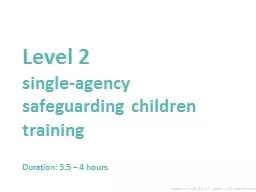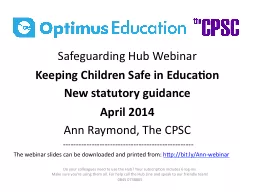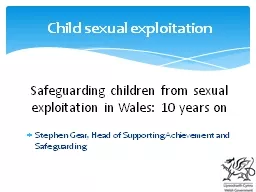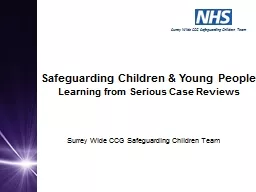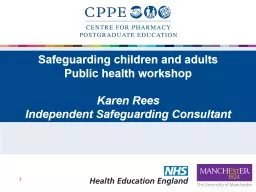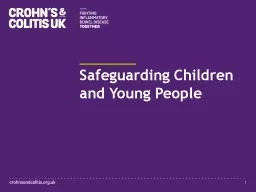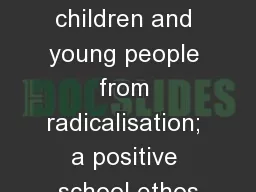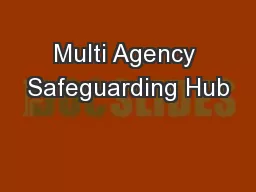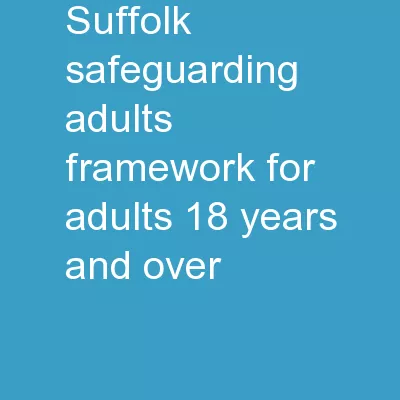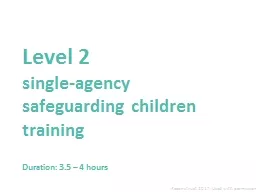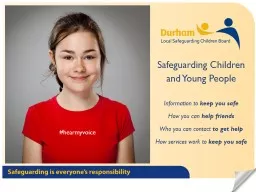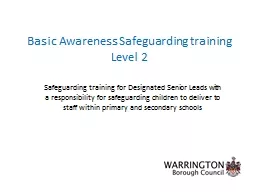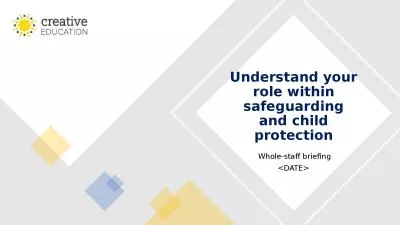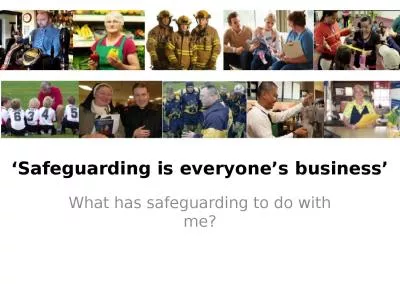PPT-Level 2 single-agency safeguarding children training
Author : tawny-fly | Published Date : 2019-11-07
Level 2 singleagency safeguarding children training Duration 35 4 hours Housekeeping Timekeeping Break times Facilities Phones off Emergency procedures Group Agreement
Presentation Embed Code
Download Presentation
Download Presentation The PPT/PDF document "Level 2 single-agency safeguarding chil..." is the property of its rightful owner. Permission is granted to download and print the materials on this website for personal, non-commercial use only, and to display it on your personal computer provided you do not modify the materials and that you retain all copyright notices contained in the materials. By downloading content from our website, you accept the terms of this agreement.
Level 2 single-agency safeguarding children training: Transcript
Download Rules Of Document
"Level 2 single-agency safeguarding children training"The content belongs to its owner. You may download and print it for personal use, without modification, and keep all copyright notices. By downloading, you agree to these terms.
Related Documents

